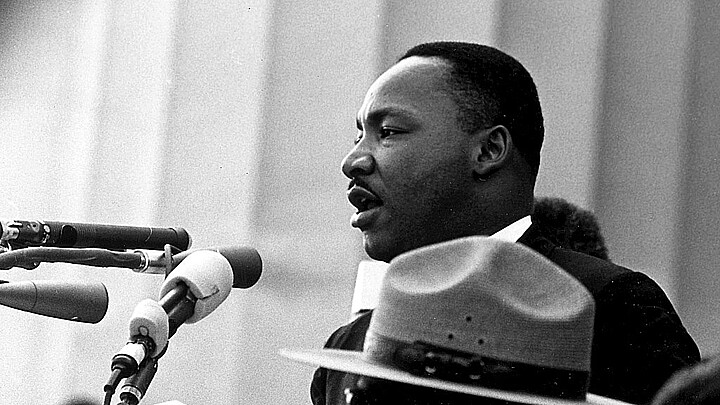Opinion & Reviews
Aid that kills: are NGOs trying to end poverty in the world or perpetuate it?
While more than 1.1 billion people worldwide have been lifted out of extreme poverty in the last 30 years, the opposite has occurred in Africa

April 17, 2023 5:39pm
Updated: April 17, 2023 5:39pm
Good intentions do not lift people out of poverty, and on many occasions, those "good intentions" can end up burying millions in misery and suffering.
For decades, Western institutions have pushed the notion that "redistributing wealth" and/or "aid" is enough to lift nations out of poverty, which is precisely the main reason why many countries fail to break out of the vicious cycle of poverty.
Haiti, for example, is a country almost run by NGOs, to the point of being known today as the "Republic of NGOs." About 10,000 "humanitarian" agencies have formed a parallel state with a budget close to that of the nation. While most of them may claim that they are there to "help" the impoverished Haitians, many are actually engaged in redistributing the resources they receive from millionaires and patrons who, driven by the propaganda of these same organizations, give away tons of money because they are convinced that they can help a few Haitians out of poverty. In reality, this money plunges them deeper into misery.
If you run an NGO whose mission is to help poor people, and whose donations are received to alleviate poverty, what would happen to your work if people miraculously came out of poverty?
The Poverty Industry
In 2014, Michael Matheson Miller and Jonathan Witt's documentary "Poverty, Inc." was distributed. The filmmakers traveled through various African, South American, and Haitian countries, analyzing the phenomenon of NGOs and how massive donations have hindered and ruined local businesses in those countries.
The documentary includes the testimonies of Nobel Peace Prize winner Mohammad Yunus, Peruvian economist Hernando de Soto and technology entrepreneur Herman Chinery-Hesse, among others. In the same documentary, former President Bill Clinton makes a series of statements in which he admits that his rice subsidy policies in Haiti were a complete failure.
The huge subsidies from developed countries to bring rice to Haiti completely ruined local producers, who evidently could not compete with the free rice that was brought in from abroad. That rice momentarily fed the mouths of hundreds of thousands of Haitians, but left the productive system devastated in the long term, causing its citizens to become eternally dependent on external handouts.
The documentary features interviews with local producers and entrepreneurs in different fields: shoe manufacturing, and solar energy, among others. After the devastating earthquake of 2010, which has been recognized as one of the biggest humanitarian catastrophes in history (estimates indicate that at least 300,000 people died), the country was filled with NGOs--many with good intentions–that would end up staying indefinitely in the Caribbean nation.
Businessman Chinery-Hesse claimed that the modus operandi of this "international aid" is always the same: European or other first-world countries' envoys arrive to negotiate the aid with local African governments, allocate resources, and then the money is awarded to certain organizations or companies to carry out the work.
Ghanaian businessman Chinery-Hesse complains that the country’s aid contracts are always awarded to European companies and not to them, despite the fact that they have the capacity to carry out different jobs in terms of software or technology, and that, ultimately, European companies that win the bids subcontract Ghanaian companies to carry out the same jobs, although it is the Europeans who keep the lion's share of the profits. Basically, it is outsourcing in which the resources of first-world nations are given to European entrepreneurs for work done by Africans.
Africa, the poverty model to follow
In 2010, African economist Dambisa Moyo wrote a book titled "The Aid that Kills," in which she states how large sums of money from developed nations have condemned her continent to underdevelopment.
Moyo has a PhD. in economics from Oxford, a Master's in Public Administration from Harvard, and worked as a consultant for the World Bank for years, in addition to serving as head of economic and strategic research for sub-Saharan Africa at Goldman Sachs.
The economist asserts in her book that more than $50 billion dollars are received annually by Africa, yet its nations continue to be mired in misery.
Between 2000 and 2013, the United States alone donated $104.812 billion to sub-Saharan Africa, followed by China with $94.310 billion, while some European Union institutions contributed $84.877 billion, with France in fourth place, sending $74.238 billion over the same period. Despite these huge injections of money, economic growth was extremely slow, and African nations are becoming more indebted by the day, increasing government instability, civil strife, and poverty levels.
According to Moyo: "Over the past 60 years, billions of dollars in development aid have been transferred from rich countries to Africa. However, per capita income today is lower than it was in the 1970s, and more than 50 % of the population (350 million people) live on less than a dollar a day, a figure that has almost doubled in two decades".
The economist insists: "... look at it this way. China has a population of 1.3 billion people and only 300 million live like us (with a high standard of quality of life). There are 1 billion Chinese living below that standard. Do you know anyone who is worried about China? No one.
This international aid, both in Africa, Haiti, and other countries with high poverty rates, instead of helping the population, has become the greatest obstacle for local producers and has generated an enormous dependence of the inhabitants of these nations on donations from the first world.
In 1990 there were 280 million people living in extreme poverty in Africa. Today that figure exceeds 460 million. Countries such as South Sudan and Niger have extreme poverty rates of over 90%, and it is estimated that by 2030 approximately 9 out of 10 extremely poor people will live in sub-Saharan Africa.
In contrast to the situation in Africa, according to the World Bank, there were 1.9 billion people in extreme poverty around the world in 1990, and today that figure has fallen to 736 million people. In other words, while more than 1.1 billion people around the world have emerged from extreme poverty in the last 30 years, the opposite has occurred in Africa, where the figure has increased by at least 150 million people.
The African reality can be transferred to all the nations of the world that go through similar processes of backwardness and poverty, some due to circumstantial and historical particularities, but a great majority due to ideological and economic vices such as socialism, which has led to the bankruptcy of different nations in Eastern Europe, Africa, and Latin America.
Many NGOs and international organizations claim to aim at eradicating poverty, but the question is: after decades of applying the same recipes that have proven to be unsuccessful, why insist on extending infinite aid that does not solve anything? Are these organizations really interested in solving things or are they bent on profiting from the suffering of others? Draw your own conclusions.










